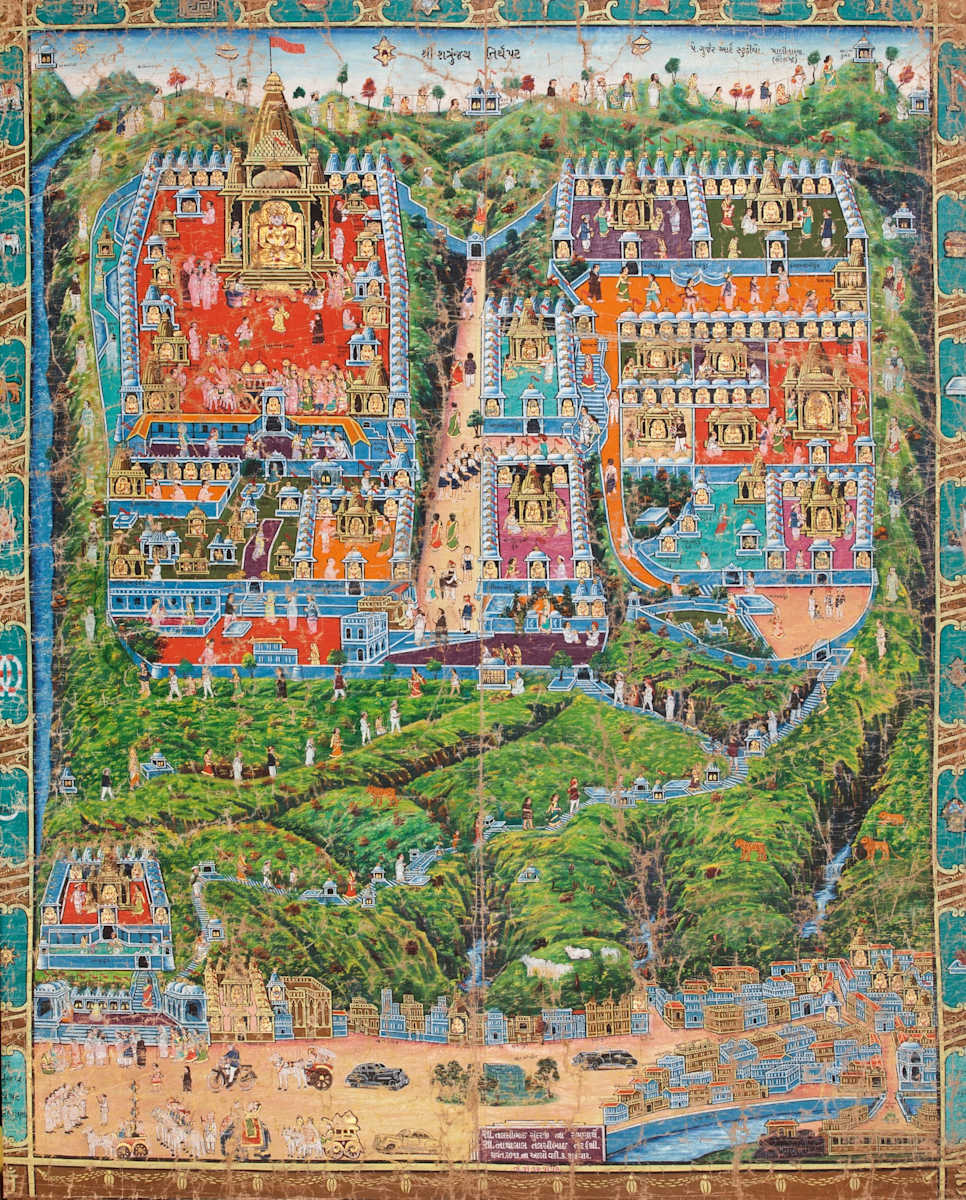Shatrunjaya Tirtha Pata
- Pigment and gold leaf on cloth
- Gujarat
Tirtha patas (paintings on cloth of holy places) started making an appearance in visual art beginning in the 15th century. Shatrunjaya tirtha patas, however, became increasingly popular in the 18th and 19th centuries and beyond, like this one that dates 1957. Large in scale so all details would be easily visible, these were of great significance for those unable to make the physical journey as they offered a chance for mental pilgrimage. And possibilities of a repeat visit for those that performed a pilgrimage there.This pata shows the mountain, the paths to the summits teeming with people and bears inscriptions marking the major gates and landmarks. Artists did not always render the site accurately or true to scale, but certain features including the most important Adishvar temple (top left in the pata) are found in all Shatrunjaya paintings. The river Shattrunji and the five Pandava brothers, characteristic of all Shatrunjaya patas, appear on the extreme left and top right of the pata respectively. The artist has also added the Khari river that flows through Palitana, at the bottom right. Unlike in other patas of an earlier period, the temples are depicted frontally and true to size. A comparison of these monumental paintings can help one understand the changes that affected the architectural layout of the site over the years.
- Created: 1957
- Attribution: Credit: Gift of Michael Abbott AO QC through the Art Gallery of South Australia Foundation 2014 (AGSA 20143P10)
